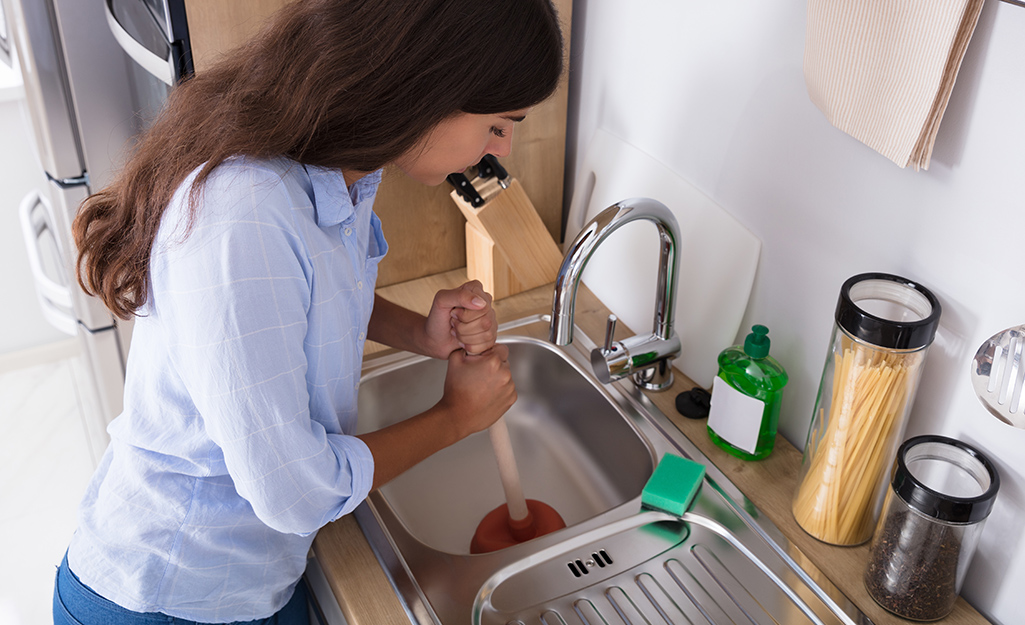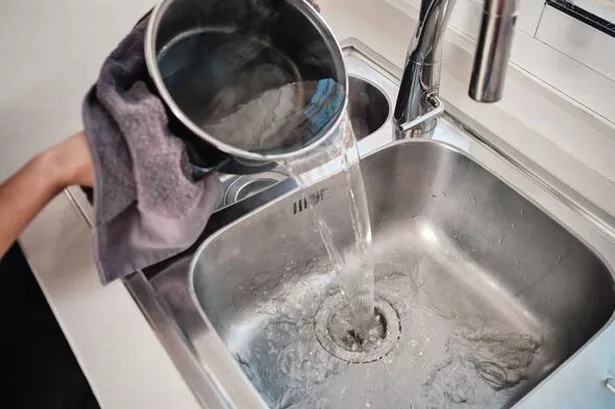
Fix a Clogged Kitchen Sink with a plunger to dislodge the clog. If that fails, try a mixture of baking soda and vinegar.
A clogged kitchen sink can be a major inconvenience. It disrupts daily routines and can lead to unpleasant odors. Fortunately, most clogs can be fixed without calling a plumber. Common household items like a plunger or a baking soda and vinegar mixture can often do the trick.
Addressing the problem quickly prevents it from becoming more severe. Regular maintenance and mindful usage can also help keep your kitchen sink free from clogs. Understanding the causes and solutions for a clogged sink can save you time and money. This guide will provide simple steps to fix your clogged kitchen sink effectively.
Common Causes
Leave a Comment / Kitchens / By ashrafsalman
Grease buildup and food particles are common culprits behind a clogged kitchen sink. Soap residue and foreign objects can also obstruct the drain. Regular cleaning and mindful disposal of waste help prevent blockages.
Food Particles
Food particles often get trapped in the sink. These bits can block the drain. Small bits of veggies or meat can cause clogs. Always scrape plates into the trash first. Use a sink strainer to catch food.
Grease Buildup
Grease buildup is a common cause of clogs. Grease hardens when it cools. This can block your pipes. Pouring grease down the sink is not a good idea. Instead, pour it into a can and throw it away.
Foreign Objects
Foreign objects can also cause clogs. Things like small toys or utensils can fall into the drain. Always check for items before washing dishes. Use a drain cover to prevent this.
Initial Steps
Start by removing any visible debris from the sink. Next, use a plunger to loosen the blockage.
Safety Precautions
Turn off the water supply. This stops more water from entering the sink. Wear rubber gloves to keep your hands clean. Ensure the area is well-lit. This helps you see better. Keep a bucket nearby. You may need it for water or debris. Never use harsh chemicals. They can damage the pipes.
Gathering Tools
Collect all necessary tools before starting. You will need a plunger. A plumber’s snake is also useful. Keep a wrench handy. You may need to open the pipes. Have some old towels for cleaning spills. A flashlight helps you see in dark areas. Make sure you have a bucket as well.
Using A Plunger
To fix a clogged kitchen sink, use a plunger to create suction and dislodge the blockage. Ensure the sink is partially filled with water, then plunge vigorously to clear the drain.
Choosing The Right Plunger
A cup plunger is best for a kitchen sink. This type of plunger has a flat bottom. Make sure the plunger is clean before use. It should cover the drain completely. Avoid using a toilet plunger; it has a different shape.
Proper Technique
Fill the sink with enough water to cover the plunger cup. Place the plunger over the drain. Make sure it forms a tight seal. Push the plunger up and down quickly. Do this for about 20 seconds.
Lift the plunger to see if the water drains. Repeat if necessary. Flush with hot water after the clog clears. This helps remove any leftover debris.
Baking Soda And Vinegar
Fix a clogged kitchen sink by pouring a mixture of baking soda and vinegar down the drain. This natural remedy effectively breaks down blockages and restores proper drainage.
Mixing The Solution
First, measure half a cup of baking soda. Then, measure half a cup of vinegar. Make sure both are ready. Next, pour the baking soda into the sink drain. Quickly pour the vinegar into the same drain. The mixture will start to bubble. This is normal and helps clear the clog.
Pouring And Waiting
After pouring the vinegar, cover the drain with a stopper. Wait for about 15 minutes. The bubbling will stop. During this time, the mixture works on the clog. After waiting, boil some water. Pour the hot water into the drain. This helps to clear the remaining clog. Repeat if necessary.
Using A Drain Snake
A drain snake can help clear your sink. First, insert the snake into the drain. Push it gently and keep feeding it into the pipe. You might feel some resistance.
Rotate the snake to catch the clog. Turn the handle clockwise and keep pushing. Once you feel the clog, pull the snake out. The clog should come with it. Clean the snake and repeat if needed.
Boiling Water Method

First, fill a large pot with water. Place the pot on the stove. Turn the heat to high. Wait until the water starts to boil. Boiling water helps to clear the clog. Be sure to use a large pot for better results.
Carefully carry the pot to the sink. Pour the boiling water directly into the drain. Do this slowly to avoid splashing. Repeat if necessary. This method works well for minor clogs. Always be careful with hot water. It can cause burns.
Checking The P-trap
Inspect the P-Trap to locate blockages hindering water flow in your kitchen sink. Detach the trap carefully, clean out debris, and reassemble.
Removing The P-trap
The P-Trap is located under the sink. Place a bucket underneath to catch water. Use a wrench to loosen the slip nuts. Carefully remove the P-Trap. Dump the water and debris into the bucket.
Cleaning The P-trap
Take the P-Trap outside. Use a wire brush to scrub the inside. Rinse it thoroughly with water. Check for any blockages. Reattach the P-Trap under the sink. Tighten the slip nuts securely. Run water to ensure the clog is gone.
Preventative Measures
Clean your sink drain weekly. Use a mixture of hot water and vinegar. This helps to clear minor blockages. Always use a sink strainer. It catches food particles and prevents clogs. Run hot water through the sink after each use. This keeps grease from building up.
Never pour grease or oil down the drain. They harden and cause clogs. Coffee grounds can also block pipes. Dispose of them in the trash. Avoid flushing fibrous foods like celery. They can tangle and block the drain. Pasta and rice expand in water. They can clog the pipes as well.
Frequently Asked Questions
What Causes A Kitchen Sink To Clog?
A kitchen sink can clog due to food particles, grease, and soap scum. Debris accumulates over time, obstructing water flow.
How Can I Unclog A Kitchen Sink Naturally?
You can use a mixture of baking soda and vinegar. Pour it down the drain, let it sit, then rinse with hot water.
Is It Safe To Use Chemical Drain Cleaners?
Chemical drain cleaners can damage pipes and are harmful to the environment. It’s better to use natural or mechanical methods.
Can A Plunger Fix A Clogged Kitchen Sink?
Yes, a plunger can effectively unclog a kitchen sink. Ensure there’s enough water in the sink to create a seal.
Conclusion
Keeping your kitchen sink clog-free is simpler than it seems. Regular maintenance can prevent future blockages. Always dispose of grease and food waste properly. Using natural cleaners helps maintain pipe health. By following these tips, your kitchen sink will remain functional and efficient.
Enjoy a smooth-running kitchen every day!
